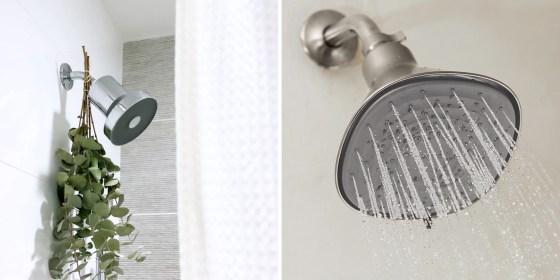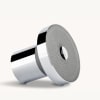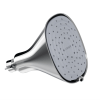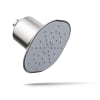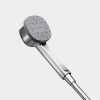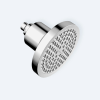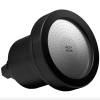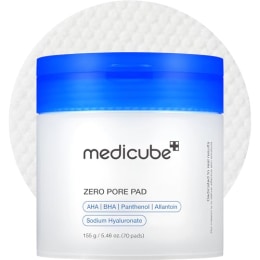How much thought do you put into your shower water? Barely any? I was with you until I spoke to experts. Shower water often has impurities like chlorine, heavy metals and sediments, which can irritate sensitive skin, make dry hair drier and even clog plumbing fixtures over time, says Doug Anderson, senior director of global engineering, research and development for Culligan, which sells water treatment systems. Filtered showerheads are a solution. They have built-in filtration systems that purify water before it hits your body, says Aldo Ceja, a home care expert for Thumbtack, a platform that helps people connect with home care professionals.
The NBC Select team has been testing filtered showerheads for over a year. Below, I share our experience installing and using models from popular brands like Jolie, Canopy, Act+Acre and Afina. I also spoke with experts about the benefits of using a filtered showerhead and their tips on how to find the right one for your home. And through October 8, you can find some of these showerheads on sale as part of Amazon's Prime Big Deal Days event, which is exclusive to Prime members.
Want more from NBC Select? Sign up for our newsletter, The Selection, and shop smarter.
How I picked the best filtered showerheads
Experts recommend considering the following factors when shopping for filtered showerheads. I took all of them into consideration while testing and putting together our list of favorites.
- Filter type: This dictates what impurities the showerhead removes. Activated carbon, KDF-55 and calcium sulfate are some of the most common filter types in showerheads — they remove chlorine, heavy metals and other minerals from water that can impact your skin and hair. Brands often add different filters to their fixtures to offer maximum purification. (Read more about each type here).
- Certified claims: The filtered showerhead you buy should have performance claims backed by evidence, preferably via third-party testing data, says Anderson. This information may be available on brand websites, or you can reach out to the brand and ask for a copy. There are no federal regulations around residential water filters, but there are voluntary standards (set by organizations like public health nonprofits) that brands can test their products against. Anderson recommends buying from a brand that tests filtered showerheads against the National Sanitation Foundation’s NSF 177 standard, certifying models that reduce chlorine in water. (Chlorine can cause dry skin and hair damage, according to experts.)
- Flow rate: Flow rate, measured in gallons per minute (gpm), refers to the amount of water that comes out of a fixture (like a showerhead) during a specific time. In the U.S., showerheads can’t exceed a flow rate of 2.5 gpm, according to federal standards created to conserve natural resources like water. To further conserve water, some states require a lower maximum flow rate, which means you may need a flow restrictor device to reduce the water stream. (Learn more about flow rate and your state’s regulations here.)
- Shower compatibility: According to experts we spoke with, most filtered showerheads are designed to work with all standard U.S. showers. Many also come with a mini wrench and plumber's tape for installation.
- Spray settings: Some showerheads have different spray settings — some only offer one; common options include mist, rain or dual. Think about your personal preferences and those of anyone you live with.
- Replacement filters: You’ll have to replace the filter every few months, depending on what the brand recommends. Consider the cost of replacements and how easy they are to buy. Some brands have subscription services that will send you a new filter when it’s almost time to replace yours.
- Finish: Filtered showerheads often come in different finishes and colors, so you can pick one that matches the hardware in your bathroom.
How we tested filtered showerheads
The NBC Select staff and I have been testing filtered showerheads since July 2023. Each of the brands on this list sent us models to try, which we installed ourselves in our bathrooms. In New York, showerheads legally can’t exceed a 1.8 gpm flow rate, so for some of the models we tested, we had to install flow restrictors.
We tested each showerhead for at least a month while taking note of how easy a model was to install, whether it impacted water pressure, how it worked and any changes we noticed in our skin or hair.
The best filtered showerheads of 2025
All the showerheads below came with one pre-installed filter, as well as necessary installation tools like a wrench and plumbers tape. (To continue using them beyond the initial trial period, we had to buy replacement filters.) They’re all tested to meet NSF-177 standards, according to the brands' websites, and each one was easily adjustable, so we could point the water stream in any direction.
Best overall
Jolie’s filtered showerhead is the first model I installed, a process I found easy and stress-free thanks to the included step-by-step guide. I love that it looks like a typical showerhead — it doesn’t look like anything special, so it blends into my space. The Jolie comes in five finishes, more than any of the other shower filters I tested: Moden Chrome, Brushed Steel, Jet Black, Brushed Gold and Vibrant Red.
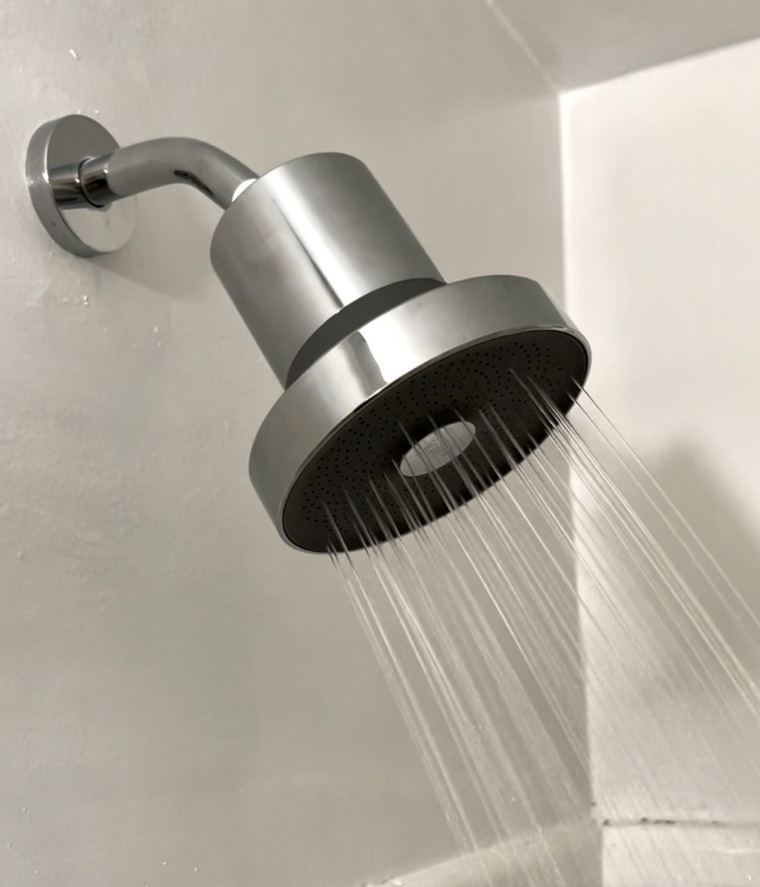
After testing four filtered showerheads, Jolie’s model is the one I returned to and continue to use now. Over the past year, I’ve noticed that my skin is less dry and my hair is softer. In fact, my hairdresser says my curls have never looked or felt healthier, which she credits to my filtered showerhead. I also appreciate how easy Jolie makes managing my filter subscription online, and that it lets me skip or delay a filter delivery if I want to. For example, if I’m away for a while and don’t use my showerhead, I might want to push back the next time I swap it out.
Though it only has one spray setting, the showerhead’s stream is wide enough for my liking because it covers my whole body when I stand underneath it. The first time I replaced the filter, I found twisting the fixture’s head off its base challenging — but it got much easier with practice.
Best handheld
Canopy’s Handheld Filtered Showerhead gives you all the benefits of its standard model since it has the exact same filter. However, you get more convenience, control and flexibility with this one — you can remove the handle from its base to bring the waterstream closer to your body, giving you the ability to target specific areas. The handheld showerhead is also useful for cleaning kids, pets and your shower. “The handheld ability makes my shower experience so much smoother,” says NBC Select editorial projects manager Rebecca Rodriguez, who’s used it for over six months. “It not only upgrades my overall shower experience, but also makes cleaning my shower and tub a million times easier.”

Canopy’s handheld filtered showerhead comes with a mount and 5-foot, 7-inch hose. You can use it as your main fixture (so you attach it directly to the pipe built-in to your wall, like all the other options on this list) or as an attachment for your current showerhead. If you want to do the latter, which Rodriguez opted for, you’ll also need to buy Canopy’s accessories kit, which comes with a diverter and mount.
Rodriguez says the installation process took less than 20 minutes, and that changing the showerhead’s filter is very easy. “Since it’s handheld, I don’t have to reach up or stand on the edges of my tub to change it,” she says. This model also comes with a scalp massager attachment, and it’s American Disabilities Act-compliant, according to the brand.
Best for multiperson households
Canopy’s filtered showerhead is the only model I tested that has three spray settings: wide, narrow and dual. You can seamlessly switch among them using a sliding notch on the bottom of the fixture. Since each person who uses the shower can choose the setting they like best, it’s great for multiperson households.
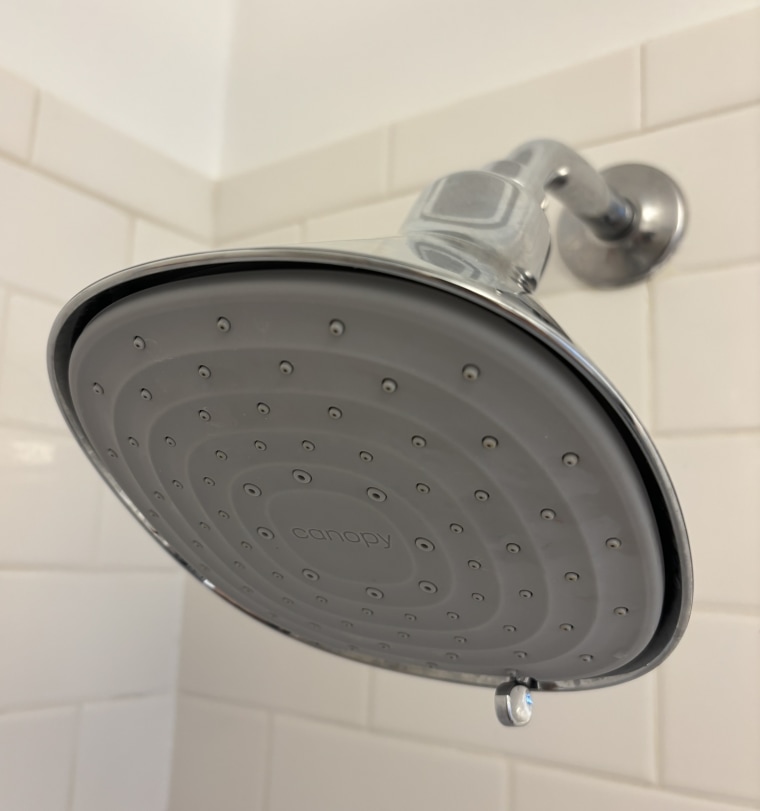
Changing the Canopy filter was easier for me than with other models — there’s no twisting or turning involved, making for a quicker process.
When shopping directly from Canopy’s website, you have three buying options: the fixture; the showerhead and a filter subscription; or the showerhead, a filter subscription and an aroma subscription. The aroma subscription comes with essential oils and hook-shaped felt diffusers to hang on the showerhead. I tried the aroma subscription and, while I liked adding fragrance to my showers, I don’t reach for it often enough to need repeated refills.
Best return policy
Afina’s filtered showerhead has a simple design and is available in nickel and chrome finishes. It only has one spray setting, but thanks to its square face, the water stream was wide enough to fully cover me.
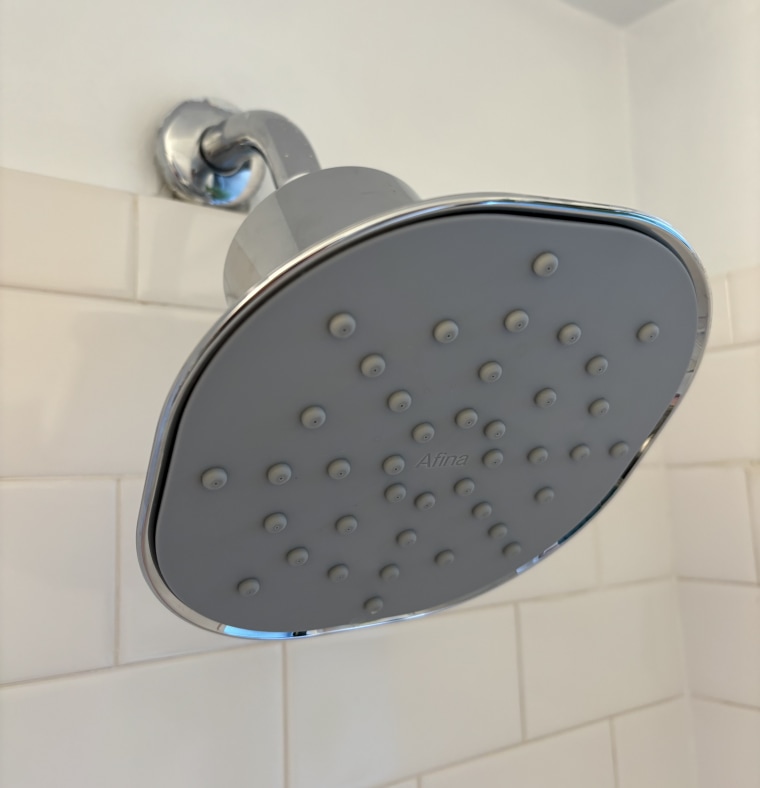
Overall, installing the Afina was straightforward. However, the included directions didn’t have specific instructions for adding a flow restrictor, and I didn’t find it on the brand’s website either. Because I had installed a few other models already, I knew enough about adding a flow restrictor that I eventually figured it out. But if I’d been new to the process, I would have been very confused. Replacing the filter, on the other hand, was easy — I just twisted the face off its base.
Notably, Afina offers one of the most generous return policies of the brands we tested. You can return the showerhead within 90 days of purchase for a full refund. On average, the other brands had return policies between 35 and 60 days.
Longest filter lifespan
Out of all the showerheads we tested, Hydroviv’s has the longest filter lifespan at six months — in comparison, most others are about 90 days. NBC Select commerce editor Lindsay Schneider says being able to “set and forget” the filter motivated her to install the showerhead. “I didn’t want to be changing the filter all the time, even though installation is easy,” she says. “I’ll just come back to this showerhead in six months, which is nothing.”
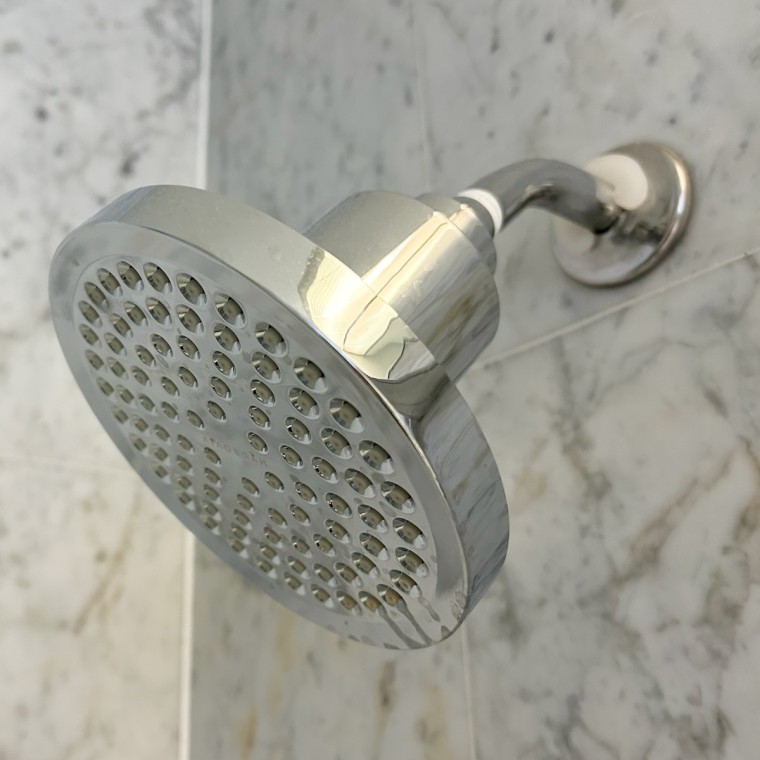
According to Hydroviv, this fixture removes over 93% of chlorine in water and takes about five minutes to install. Schneider attached it to her bathroom’s pipe without stress or difficulty since the included instructions were straightforward, plus it came with plumber’s tape if she needed it. The showerhead has a five-year warranty, too — if something goes wrong within that timeframe, you can contact the brand for assistance.
After using Hydroviv’s filtered showerhead for about three months, Schneider says she noticed a difference in how her hair feels. “My hair is genuinely softer, and the appliance looks nice in my bathroom, too,” she says. While the fixture shouldn’t impact water pressure, according to the brand, Schneider says hers is a bit lighter since installation.
Best compact model
Act+Acre is one of our favorite women-owned businesses, and because I’ve had a great experience using the brand’s hair care products, I wasn’t surprised that its filtered showerhead is designed well. It has a circular face like the Jolie, but it’s smaller by about .75 inches. That means Jolie’s water stream is a bit wider than Act+Acre’s, but not by enough that I found it particularly noticeable. If you have a very small shower, you may appreciate the compact size.
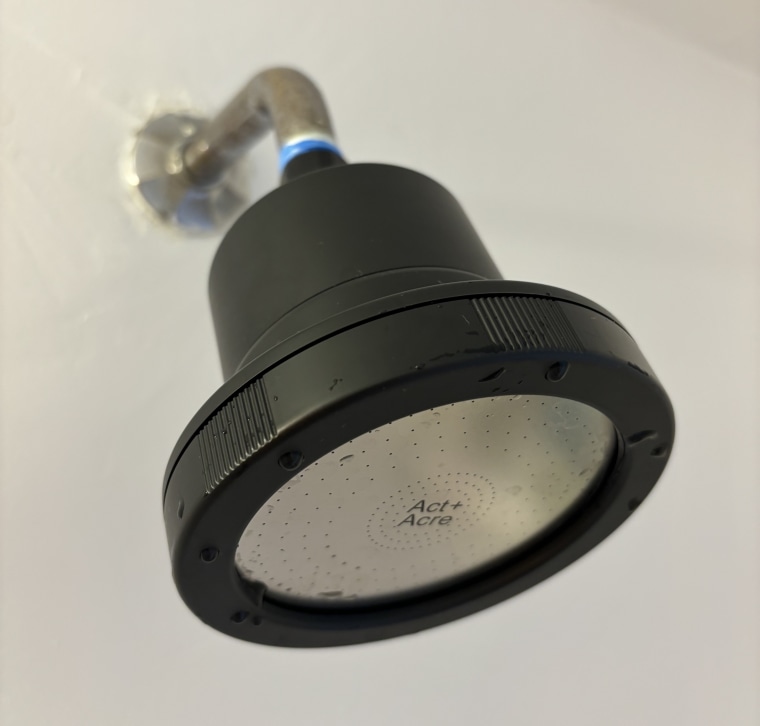
Installing Act+Acre’s showerhead took me less than five minutes, and I easily twisted its face off its base to change the filter. If you subscribe to Act+Acre’s filter subscription program, you get your first replacement filter for 40% off, making it $19.20. But all subsequent filter replacements are 20% off via the subscription, making them $25.60 . (If you don’t opt for the subscription service, each filter replacement is $32.) Act+Acre’s filtered showerhead has the shortest return window (30 days) compared to the other brands I tested.
What types of filters are best?
Filter type is one of the most important factors to consider because it dictates what it can remove from your water. There’s no standard filter so understanding each one can help you narrow down the model you want to buy. Brands typically include multiple types of filters in a showerhead to offer maximum purification, experts told us.
Before purchasing a filter, our experts recommend getting your water tested. Doing so tells you the exact impurities present in it and at what levels. Get your water tested by an EPA-registered lab if you can, although you can also buy at-home water test kits. Still, keep in mind that at-home kits can’t give you in-depth information and tend to be much less accurate than lab results, plus they’re prone to user error, says Anderson.
Listed below are some of the common filters you’ll see when shopping and what each one does, according to our experts:
- KDF-55 filters (aka kinetic degradation fluxion filters) reduce heavy metals and chlorine in water. Heavy metals can cause scale buildup (crusty mineral deposits) in your shower or tub, while chlorine can lead to dry skin and hair damage, says Anderson. Municipalities often add small amounts of chlorine or chloramine to water to kill germs, disinfecting it so it’s safe to drink, according to the Centers for Disease Control and Prevention. KDF-55 filters, among other types, then reduce the presence of that chlorine and chloramine in water before it touches your body. This can make for more hydrated skin and healthier hair over time, he says.
- Activated carbon filters reduce odors and chlorine in water.
- Ceramic filters reduce dirt, debris and bacteria in water.
- Calcium sulfite filters reduce chloramine and chlorine in water.
- Vitamin C (ascorbic acid) filters reduce chloramine and chlorine in water.
What is flow rate?
As mentioned above, flow rate is the amount of water that comes out of a fixture (like a showerhead) during a certain period of time. States have different regulations on maximum flow rates for water conservation purposes. That said, not all showerheads are compatible with every state’s regulations — you may have to install a flow restrictor before using one. A flow restrictor reduces the amount of water that can pass through a fixture so it meets the regulatory standards in your state, says Ceja.
Here are the key rates to know:
- 2.5 gpm: Showerheads in the U.S. cannot exceed a flow rate of 2.5 gpm, which is a limit set by the federal government.
- 2.0 gpm: Seven states in the U.S. have tighter restrictions on flow rate: Colorado, Maine, Maryland, Massachusetts, New Jersey, Rhode Island and Vermont
- 1.8 gpm: Six states in the U.S. have the tightest restrictions on flow rate nationwide: New York, California, Oregon, Hawaii and Washington
Meet our experts
At NBC Select, we work with experts who have specialized knowledge and authority based on relevant training and/or experience. We also take steps to ensure that all expert advice and recommendations are made independently and with no undisclosed financial conflicts of interest.
- Doug Anderson is the senior director of global engineering, research and development for Culligan, which sells water treatment systems.
- Aldo Ceja is a home care expert for Thumbtack with more than 15 years of experience as a general contractor.
- Dr. Brooke Jeffy is a board-certified dermatologist and the founder of Btwn, a skin care brand for tweens and teens.
- Sara Hallajian is a trichologist and the founder of Ame Salon in California.
Why trust NBC Select?
I'm a reporter at NBC Select whose written about home care and wellness for five years, including topics like dusters, eco-friendly cleaning products, ingrown hair treatments and razor burn. For this article, I interviewed four experts about filtered showerheads. I've been testing models for over a year with other members of NBC Select's staff.
Catch up on NBC Select’s in-depth coverage of tech and tools, wellness and more, and follow us on Facebook, Instagram, Twitter and TikTok to stay up to date.

